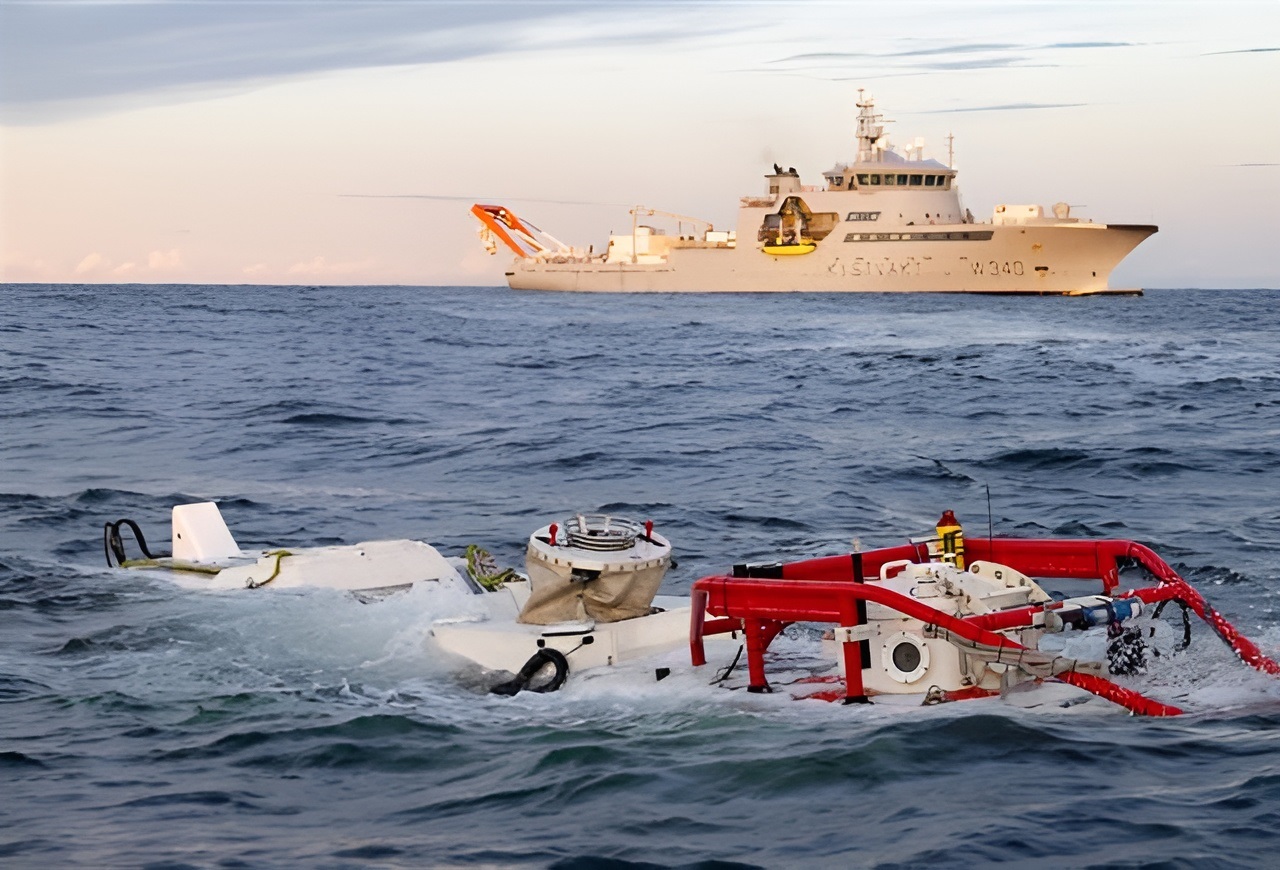NATO Allies have demonstrated the importance of collaboration when it comes to the complex art of submarine rescue during Exercise Dynamic Monarch 24. Across the ten day exercise, experts with decades of experience came together to share the latest techniques, as well as test and refine their submarine rescue capabilities. Ten nations took part in the exercise – Canada, France, Germany, the Netherlands, Norway, Poland, Sweden, Türkiye, the United Kingdom, and the United States. Hosted by Norway, the exercise took place in Norwegian territorial waters between 9–19 September. The stages of submarine search and rescue were tested and evaluated throughout the exercise, to ensure the best outcome for what would essentially be a race against time. In any distressed submarine (DISSUB) situation, the first stage of response will be the search for the submarine in trouble. Submarines are stealthy by design, so in a real situation finding one is challenging. A US P-8 Poseidon Maritime Patrol Aircraft, sonar systems and underwater drones were all deployed in Dynamic Monarch during this phase.
“This exercise is a clear demonstration of cooperation among submarine nations and the professionalism of the submarine rescue community. International collaboration plays a critical role in ensuring rapid and effective responses to submarine emergencies. The skills and experiences gained through this exercise contribute significantly to the interoperability of navies and broader maritime security efforts,” Commander, Submarines NATO, US Navy Rear Admiral Bret Grabbe said.
“As host nation we are pleased with how the exercise turned out. It has been valuable both to train with, but also to connect with our Allies and exchange experiences on important subjects. Submarine Rescue is complex, and exercises like Dynamic Monarch are necessary to prepare if we ever need to save personnel from a distressed submarine,” said Norwegian Navy Captain Espen Rasmussen, Deputy Fleet Commander.

The UK successfully tested a new capability, known as the Distressed Sub Group (DSG), hosted on board HNLMS Mercuur. This rapidly deployable team provides initial underwater search via Remotely Operated Vehicle, prepares the submarine site for rescue, while making initial contact with the crew of the submarine via underwater communications. Meanwhile, dive teams operated from Polish ship ORP Lech and Turkish ship TCG Alemdar. The NATO Submarine Rescue System (NSRS) operated its Intervention Remotely Operated Vehicle (IROV) from French ship FS Rhone. Capable of reaching depths of 1000m, it can carry a variety of tools to assist in removing debris and delivering emergency life support stores to the survivors through the escape hatch, in watertight pods, known as pod-posting.
Once the submarine was located, the rescue phase began. On Dynamic Monarch, state-of-the-art rescue ships NoCGV Barentshav (Norway), HSwMS Belos (Sweden) and TCG Alemdar (Türkiye) operated daily. Submarine Rescue Vehicles (SRV) included the Swedish URF on board HSwMS Belos, and the NSRS on board NoCGV Barentshav. They dived regularly onto both Swedish and Norwegian submarines sitting 70 Metres below the surface. Both systems dived down to the distressed sub and docked with the escape hatch, creating a sealed connection allowing the crew to climb on board the submersible. They were then returned safely to the surface. The URF, a large yellow submarine, is capable of diving to a depth of 460 meters, the deepest point of the Baltic Sea. It can take up to 35 passengers – the whole crew of a Swedish submarine – in one go. Once at the surface, crew can be transferred into hyperbaric chambers for decompression and treatment for any injuries by specially trained medics.

The NSRS, jointly owned by France, Norway and the UK, has space for 15 passengers and can dive to depths of more than 600 meters. Once back at the surface, its Transfer Under Pressure system of chambers has space for up to 150 personnel, the entire crew of a Vanguard Class submarine. Operating teams aim to have the NSRS anywhere in the world within 96 hours. Submariners can also escape a stricken submarine, propelling to the surface wearing special survival suits, allowing them to survive for up to 5 days in high seas. During Dynamic Monarch, “Submarine Escape Surface Rescue” was practised by a team of US Para Rescuemen. They transferred survivors by Norwegian AW101 helicopter to German ship FGS Main. Once back on board ship, submariners could be at risk of decompression sickness, known as “the bends’, due to the pressure differences between the submarine and the surface. If necessary, rescued crew members can spend up to 72 hours in hyperbaric chambers, where the air pressure is slowly lowered. During Dynamic Monarch, multinational teams of underwater medicine specialists worked together to treat the injured inside the chambers, as well as the psychological trauma they might have endured.
The participation of multiple nations in the exercise highlights the shared responsibility of ensuring safe seas and the continued development of advanced submarine rescue techniques. Through Dynamic Monarch, Allies strengthened their ties, improved joint operational capabilities and demonstrated their shared readiness to act in times of crisis. Exercise Dynamic Monarch is held every three years, and alternates between warm and cold water – the last time the exercise was held in cold water was Poland in 2014. Exercise Dynamic Monarch 24 was led by NATO’s International Submarine Rescue Liaison Office (ISMERLO), which enhances cooperation between Allies and Partners for submarine rescue. ISMERLO is a global capability with more than 40 nations that helps facilitate an international response for a distressed submarine and improves the ability to respond to a call for assistance through its coordination role. Although established by NATO, ISMERLO supports all nations and pursues the involvement of global submarine-operating nations with a focus on the humanitarian aspect of saving lives at sea. ISMERLO is based at NATO HQ Allied Maritime Command (MARCOM) in Northwood, UK. MARCOM is the central command of all NATO maritime forces and the MARCOM Commander is the primary maritime advisor to the Alliance.















